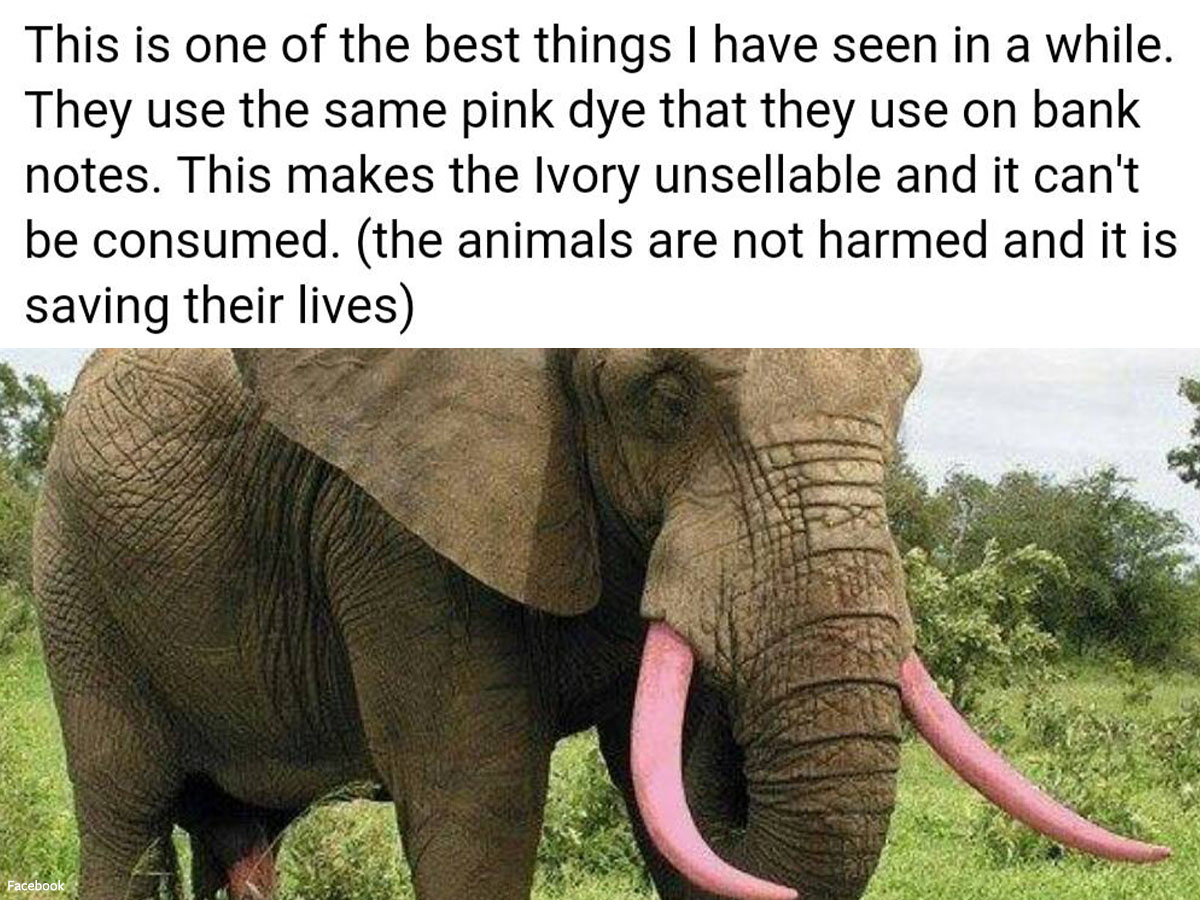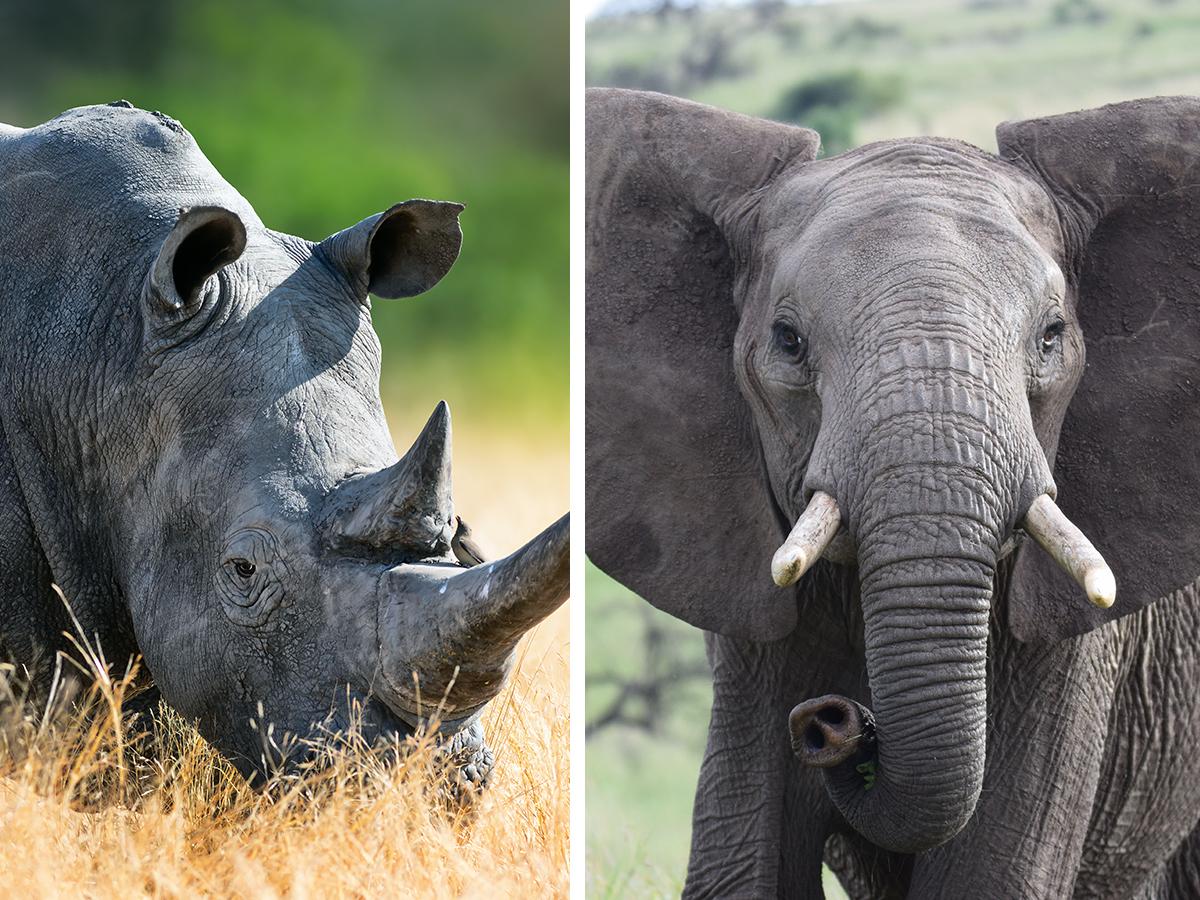Debunked: Tusks & Horns Not Dyed Bright Pink to Deter Poachers
Images of elephants and rhinos with bright pink tusks and horns have been circulating the internet for years, and they are once again resurfacing. The original viral post featured both an elephant with his tusks deliberately colored with a striking pink hue and a rhino sporting a tusk of the same hue. The dying of tusks and horns was claimed to deter poachers from killing elephants and rhinos.
The poaching of elephants for their tusks and rhinos for their horns is a brutal practice and also a trade that endangers the survival of these iconic animals.
In 2020, 394 rhinos were killed by poachers in South Africa, which marks a 33% decrease from the previous year due to COVID-19 lockdowns. Poachers may shoot the animals with tranquilizer darts, hack off their horns, and leave the terrified animals to bleed and die alone. Rhino horn has been used in traditional medicine as an unsubstantiated “cure” for various ailments. Black, Javan, and Sumatran rhino species are critically endangered.
The African elephant, once known as singular species, is now divided into two separate species: the endangered savanna elephant and the critically-endangered forest elephant. The international trade of ivory has been banned since 1990, however, both the savanna and forest elephants struggle to survive due to the violent massacre of their species, primarily for their tusks and body parts. Poachers may shoot elephants with poison arrows to bring the gentle, terrified animals to the ground. They may also use high-powered guns such as AK-47s. The poachers may cut the tendons of the still-conscious elephants to immobilize them and hack off their trunks. Axes are used to violently remove the tusks from their skulls.

Above is one example of the misleading post circulating.
At first thought, the idea of dying tusks to make them unsellable, and therefore saving the lives of these endangered animals seems like a fantastic idea. However, reports quickly revealed that the images were digitally altered, yet they continue to be shared by hopeful advocates.
Elephant experts disagree with this (now debunked) anti-poaching strategy for several reasons. The dying process can endanger the health of the animal which would involve the use of anesthesia to put them to sleep during the dying process. Elephant tusks can also grow an inch per year, making regular re-dying necessary — and unrealistic, due to the time and resources required. Additionally, elephant tusks are large teeth that grow from roots located in the animals’ skulls, which would not be able to be colored through a dying process. There is also concern that poachers would still hunt down elephants for the unexposed ivory.
Organizations have and do infuse rhino horns with parasite-killing compounds and dyes to contaminate and devalue them. However, the process must be repeated every 3-4 years as the horn grows out and involves implanting microchips to track the animal, DNA sampling, and other strategies and techniques.
According to the organization involved, the surfaces of rhino horns are not dyed pink since the animals grind down their horns and would not be visible for long, and the fact that animals without dyed horns would become even more targeted by poachers. The organization actively works to debunk these misleading rumors and encourages the sharing of factual information of current methodologies and available technology.
There is no doubt that collective efforts are urgently needed to put an end to gruesome wildlife trafficking. Please stay tuned and support factual efforts to protect our planet’s most vulnerable species.


